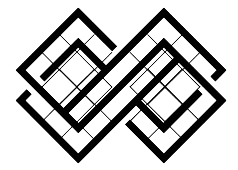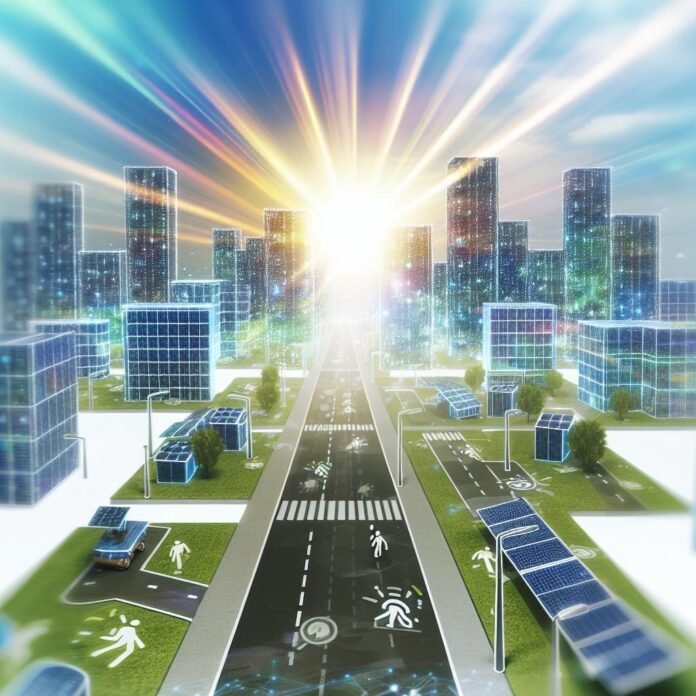In teh quest for sustainability and efficiency, the concept of smart cities has gained significant traction over the past decade. With urban populations soaring and the demands on infrastructure growing, cities around the world are embracing innovative technologies to improve the quality of life for residents while minimizing environmental impact. Among these advancements,the integration of solar-powered Internet of Things (IoT) devices is emerging as a game-changer.This powerful combination not only harnesses renewable energy but also leverages real-time data to optimize urban systems, enhance public services, and create a more connected environment. In this article, we will explore how solar-powered IoT is transforming urban landscapes, driving advancements in energy efficiency, traffic management, and resource conservation, ultimately paving the way for smarter, greener cities. Join us as we delve into the burgeoning world of solar-powered IoT, and discover how these technologies are reshaping our urban futures.
Table of Contents
- Harnessing Renewable Energy for IoT Integration in Smart Cities
- Enhancing Urban Infrastructure with Solar-Powered IoT Solutions
- Driving Sustainable Development through Smart Solar Technologies
- Best Practices for Implementing Solar-Powered IoT in Urban Environments
- The Way Forward
Harnessing Renewable Energy for IoT Integration in Smart Cities
The integration of renewable energy sources into the functionality of IoT devices is paving the way for truly sustainable smart cities. By leveraging solar power, cities can significantly reduce their carbon footprint while maintaining operational efficiency. Solar panels can be seamlessly integrated into urban infrastructure, powering various IoT applications that span across transportation, waste management, and smart building systems. As cities incorporate these technologies, they not only enhance their energy independence but also create a network of interconnected devices that communicate in real-time, optimizing resource use for residents and city planners alike.
One of the most transformative aspects of this energy revolution is how it enables a circular economy within urban environments. Consider the following benefits of integrating renewable energy with IoT in smart cities:
- Efficient Energy Utilization: Real-time data from IoT devices can optimize energy usage, shifting loads to times when renewable energy supply is highest.
- Reduced Operational Costs: Solar-powered IoT systems lower energy bills for municipalities, enabling reinvestment into community services.
- Enhanced Public Engagement: Smart energy dashboards can keep residents informed about their consumption, fostering more sustainable behaviors.
| IoT Application | Renewable Energy Source | Impact on Smart City |
|---|---|---|
| Smart Streetlights | Solar Panels | Reduce energy costs and environmental footprint |
| Waste Management Sensors | Biogas | Optimize waste collection efficiency |
| Smart Parking Systems | Wind Energy | Lower emissions and enhance commuter experience |
Enhancing Urban Infrastructure with Solar-Powered IoT Solutions
The integration of solar-powered Internet of Things (IoT) solutions in urban infrastructure is revolutionizing the way cities manage resources and services. By harnessing renewable energy, cities can reduce their carbon footprint while enhancing operational efficiency. Key benefits of integrating solar-powered IoT include:
- Energy Independence: Utilizing solar energy diminishes reliance on traditional power sources.
- Real-Time Data Monitoring: IoT sensors collect data on traffic, air quality, and energy usage, allowing for timely interventions.
- Cost Savings: Reducing utility costs enables municipalities to allocate funds more effectively.
- Improved Public Services: Smart lighting and waste management systems lead to enhanced quality of life for residents.
Moreover, the synergy between solar power and IoT can streamline city operations in various sectors. As an example,solar-powered streetlights equipped with motion sensors can adjust their brightness based on pedestrian activity,conserving energy during low-traffic hours. Additionally, smart waste bins with iot sensors can signal when they’re full, optimizing collection routes and minimizing operational costs.The following table illustrates how specific applications can benefit from this innovative approach:
| Application | Benefits |
|---|---|
| Smart Street Lighting | Reduces energy consumption by up to 60%. |
| Smart Waste Management | Decreases collection costs and optimizes routes. |
| Public Transportation Monitoring | Enhances scheduling and reduces wait times for commuters. |
driving Sustainable Development through Smart solar Technologies
Smart solar technologies are revolutionizing the way urban environments achieve sustainability. By integrating solar power with Internet of Things (iot) devices, cities can optimize energy consumption, reduce emissions, and enhance the quality of life for their residents. for instance, solar-powered street lights equipped with smart sensors can adjust brightness based on pedestrian presence, conserving energy when foot traffic is low. Other applications include solar charging stations for electric vehicles and smart waste management systems that signal when bins need to be emptied,ensuring resources are utilized efficiently.
Moreover, solar technologies foster community engagement and economic growth. By harnessing renewable energy, cities can create jobs in the green technology sector while promoting awareness about sustainability among citizens. The benefits of these innovations are clear:
- Reduction in carbon footprint
- Lower energy costs
- Enhanced urban resilience
As municipalities invest in and implement these advanced systems, the positive impact on sustainable development becomes increasingly evident, creating a smarter and greener urban landscape for future generations.
Best Practices for Implementing Solar-Powered IoT in Urban Environments
To effectively integrate solar-powered IoT technologies into urban settings, municipal planners and tech developers should prioritize collaboration and community engagement. Building partnerships among local governments, private companies, and community organizations can foster innovation and ensure that solutions meet the specific needs of residents. By conducting workshops and forums, cities can gather insights from citizens, addressing their concerns and ideas regarding solar projects. Additionally, establishing pilot programs in smaller neighborhoods allows for risk management and provides valuable data for future scaling.
Furthermore, leveraging modular designs for solar-powered devices can enhance adaptability across different urban landscapes. Such designs allow for easier installations on varied structures, from rooftops to streetlights, without requiring extensive infrastructure modifications. Cities should also implement data-driven strategies by utilizing IoT capabilities to monitor energy consumption and performance metrics. This data can guide future solar projects and optimize existing ones—ensuring they promote sustainability while remaining economically viable. Regular maintenance schedules and community-driven oversight can further guarantee these initiatives remain effective over time.
The Way Forward
As we stand on the brink of a new era in urban living, the integration of solar-powered IoT technologies represents a monumental shift in how we design and interact with our cities. The promise of smarter,more sustainable urban environments isn’t just a dream—it’s becoming a reality,thanks to the innovative intersection of renewable energy and intelligent technology.
Cities around the globe are beginning to harness the power of the sun, using solar energy to not only fuel IoT devices but also to drive significant improvements in efficiency, safety, and quality of life. From intelligent traffic systems that reduce congestion to smart waste management solutions that enhance recycling efforts,the potential applications are limitless.
As we continue to explore the vast capabilities of solar-powered IoT, it is indeed crucial for city planners, policymakers, and residents to collaborate and embrace these advancements. By doing so, we can create urban spaces that are not only smarter but also more resilient and equitable.
the rise of solar-powered IoT is more than just a technological trend; it’s a movement towards sustainable urban futures. As we transform our cities with these innovations, let’s remain committed to fostering environments that prioritize both ecological well-being and human connectivity. The future is bright—and it’s powered by the sun. Stay engaged and informed as we collectively navigate this exciting transition towards truly smart cities.

